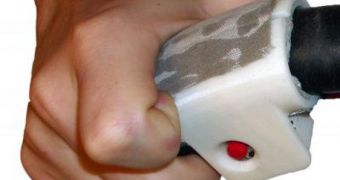Oftentimes, drivers tend to show utter disregard for their safety and that of others, by either talking on their cell phones or being absent-minded. New, steering wheel-mounted devices may help solve the attention problems.
Scientists have produced a new type of sensor, that can pull the skin on the drivers' fingers so as to make them attentive to the road. This is done in a very simple manner.
Regularly, drivers can either get their indication from their own senses (preferably), from other passengers, or from navigation systems. But they can sometimes disregard all of these warnings.
The new system circumvents this problem by offering a tactile feel of the situation, say researchers at the University of Utah.
The team here was in charge of the scientific study that led to the development of the new devices. Mounting them on the steering wheel seemed like the natural choice, the group reveals.
“It has the potential of being a safer way of doing what's already being done – delivering information that people are already getting with in-car GPS navigation systems,” explains William Provancher.
The expert is the lead author of a new study detailing the findings. Two additional papers offering a theoretical background for this research were published earlier this year, in the journal Transactions on Haptics.
The publication is edited by the Institute of Electrical and Electronics Engineers. Provancher is an assistant professor of mechanical engineering at the University of Utah.
I am beginning “to meet with the Utah Division of Services for the Blind and Visually Impaired to better understand how our technology could help those with vision impairments,” he says.
But for now the work is focusing on keeping drivers and pedestrians safe. The wheel-mounted devices rely on two IBM ThinkPad TrackPoint buttons, which oscillate slightly on the back of the wheel.
They move about one millimeter clockwise (for going right) or counterclockwise (for going left). The drivers keep their fingers on the small rubber dots, and feel the slight tug on their fingertips.
“The point is, it will help everybody. We all have visual and audio distractions when driving,” Provancher explains.
“Having the steering wheel communicate with you through your fingertips provides more reliable navigation information to the driver,” he concludes.

 14 DAY TRIAL //
14 DAY TRIAL //